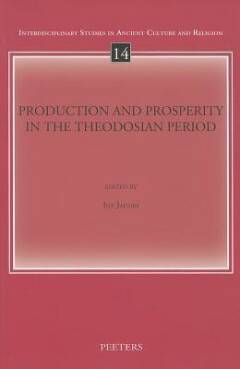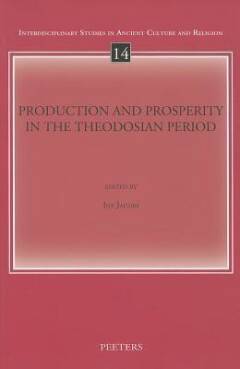
- Afhalen na 1 uur in een winkel met voorraad
- Gratis thuislevering in België vanaf € 30
- Ruim aanbod met 7 miljoen producten
- Afhalen na 1 uur in een winkel met voorraad
- Gratis thuislevering in België vanaf € 30
- Ruim aanbod met 7 miljoen producten
Zoeken
Production and Prosperity in the Theodosian Period
€ 67,00
+ 134 punten
Omschrijving
Despite the large increase in material evidence datable to the Theodosian period (379-455 C.E.), textual sources still dominate our view of the period. This has led to a pretty bleak picture made up of foreign invasions, loss of territory, a weak ruler dynasty, a state-driven distribution system, and declining cities. And yet, many regions of the Roman Empire seem to have been doing quite well. For this reason, this volume aims at a re-evaluation of the prosperity of the Roman Empire under the Theodosii. Archaeological, historical, epigraphic and numismatic research are combined to investigate the vitality and socio-economic potential of distinct regions of the empire; to explore the relative importance of cities, villages, fortresses and estates in patterns of purchase and consumption; to gain insights into the mechanisms and forces underlying production, distribution and consumption of both staple goods and luxury products; and, eventually, to offer explanations for the general condition and functioning of the empire.
Specificaties
Betrokkenen
- Uitgeverij:
Inhoud
- Aantal bladzijden:
- 413
- Taal:
- Engels
- Reeks:
- Reeksnummer:
- nr. 14
Eigenschappen
- Productcode (EAN):
- 9789042930124
- Verschijningsdatum:
- 29/01/2014
- Uitvoering:
- Paperback
- Formaat:
- Trade paperback (VS)
- Afmetingen:
- 160 mm x 239 mm
- Gewicht:
- 657 g

Alleen bij Standaard Boekhandel
+ 134 punten op je klantenkaart van Standaard Boekhandel
Beoordelingen
We publiceren alleen reviews die voldoen aan de voorwaarden voor reviews. Bekijk onze voorwaarden voor reviews.










